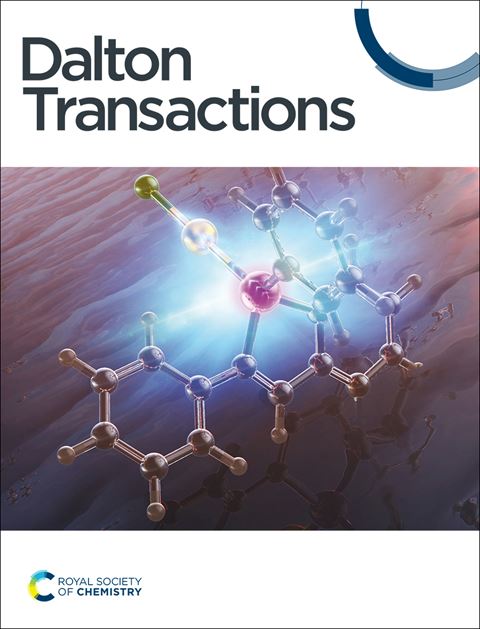支持低价锕系元素的硫系钼团簇的电子结构
IF 3.5
3区 化学
Q2 CHEMISTRY, INORGANIC & NUCLEAR
引用次数: 0
摘要
采用密度泛函理论和多参比方法研究了早期锕系元素与不完全立方化合物M3(μ3-Q)(μ2-Q)3硫族化物团簇的金属化、成键和电子结构。我们证实,低价U(III)的掺入导致其氧化为U(IV),这是由于与硫化钼核的分子内氧化还原反应。相反,关于低价超铀元素与硫化钼配位后的氧化态,仍有悬而未决的问题。密度泛函理论计算表明,超铀中心仍然是An(III),而完整的活性空间计算表明,锕系元素氧化类似于在铀中观察到的氧化。利用分子中原子的量子理论证实了锕系元素和硫化钼簇之间的主要静电键合。我们对较硬和较软硫属化合物簇的研究结果与锕系元素与其载体之间的优先软软相互作用一致。本文章由计算机程序翻译,如有差异,请以英文原文为准。
Electronic Structure of Molybdenum Chalcogenide Clusters as Supports for Low-Valent Actinides
The metallation, bonding, and electronic structure of redox active incomplete-cubane M3(μ3-Q)(μ2-Q)3 chalcogenide clusters with early actinides were studied using density functional theory and multireference methodologies. We confirmed that the incorporation of low-valent U(III) leads to its oxidation to U(IV) due to an intramolecular redox reaction with the molybdenum sulfide core. On the contrary, open questions remain with respect to the oxidation state of low-valent transuranic elements upon their coordination to the molybdenum sulfide core. Density functional theory calculations indicate that the transuranic center remains An(III), while complete active space calculations suggest an actinide oxidation analogous to the one observed in the uranium species. The predominantly electrostatic bonding between the actinides and the molybdenum sulfide cluster was confirmed using quantum theory of atoms in molecules. Our results on clusters with harder and softer chalcogenides are in agreement with a preferential soft-soft interaction between the actinide and its support.
求助全文
通过发布文献求助,成功后即可免费获取论文全文。
去求助
来源期刊

Dalton Transactions
化学-无机化学与核化学
CiteScore
6.60
自引率
7.50%
发文量
1832
审稿时长
1.5 months
期刊介绍:
Dalton Transactions is a journal for all areas of inorganic chemistry, which encompasses the organometallic, bioinorganic and materials chemistry of the elements, with applications including synthesis, catalysis, energy conversion/storage, electrical devices and medicine. Dalton Transactions welcomes high-quality, original submissions in all of these areas and more, where the advancement of knowledge in inorganic chemistry is significant.
 求助内容:
求助内容: 应助结果提醒方式:
应助结果提醒方式:


